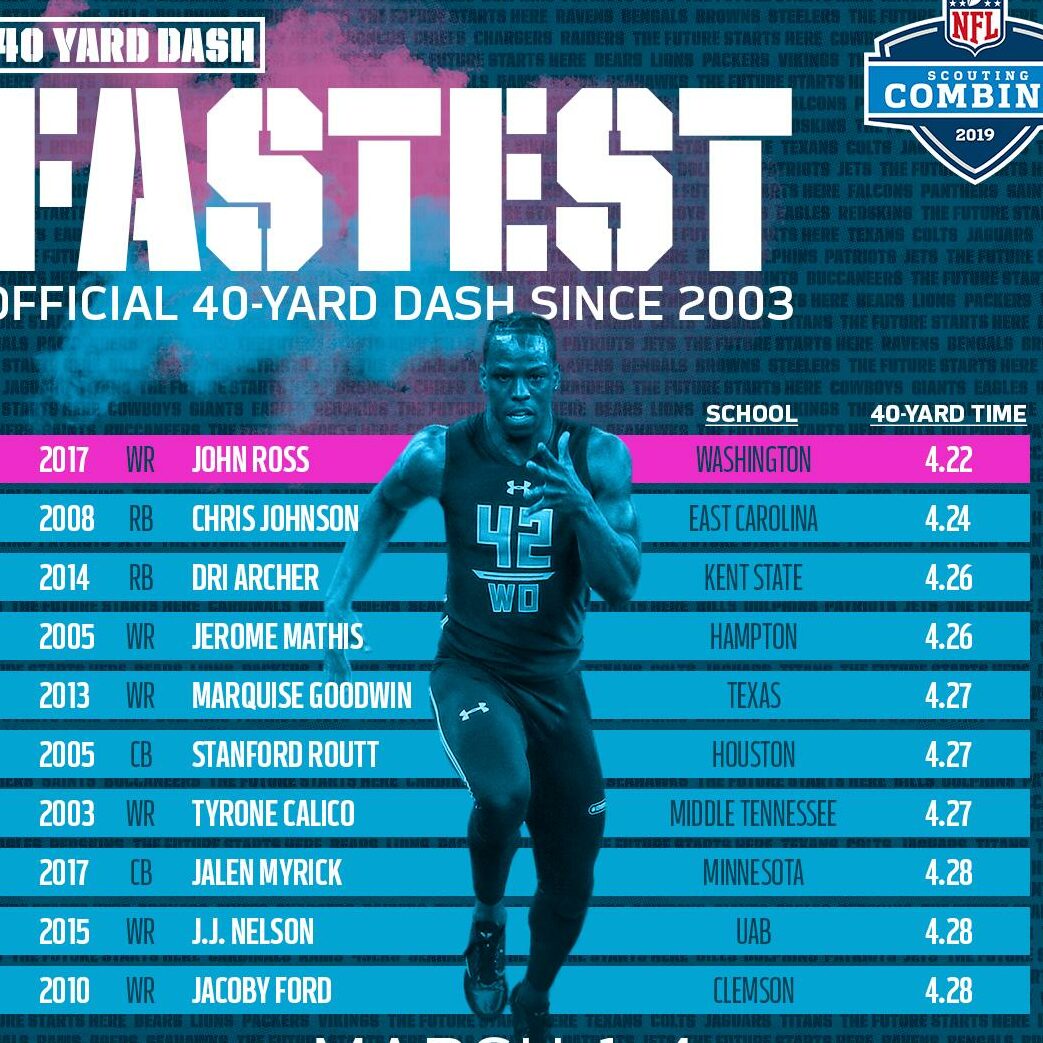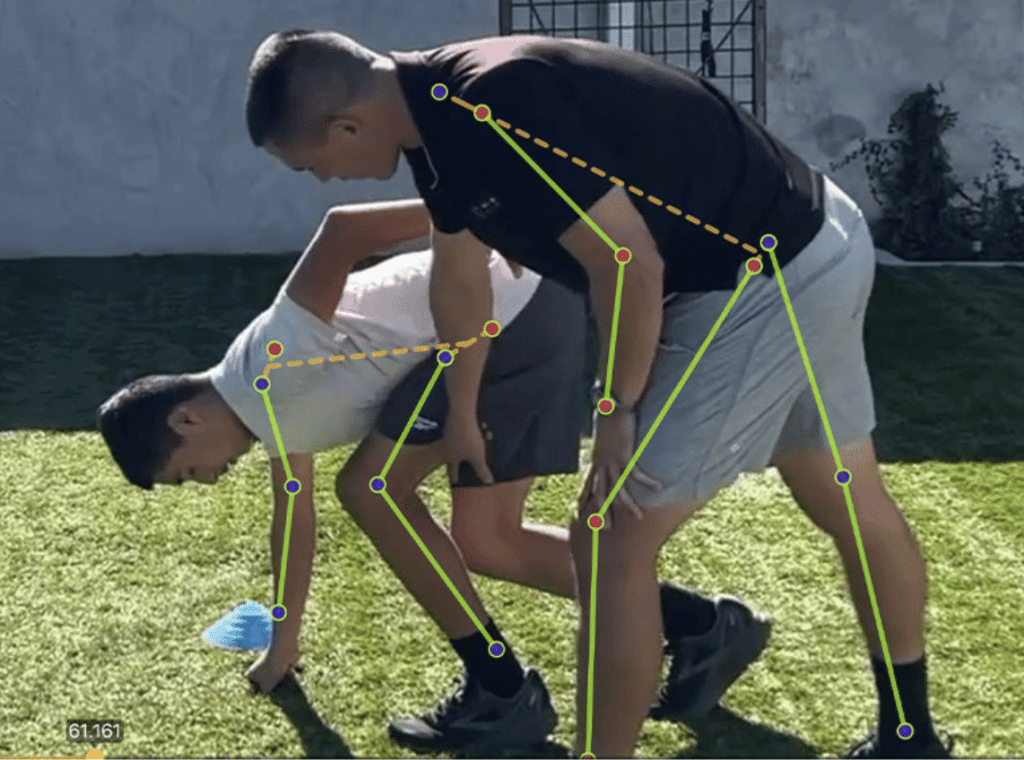The Best 40 Yard Dash Training Regimen To Improve Your 40 Time
The training for the 40 yard dash has to be extremely specific in order for you to guarantee the best results when testing. Success in the 40 yard dash shows a unique combination of acceleration, top end speed and skill development, all of which are critical to have success at the highest level of football. Which is why the 40 yard dash has made people top picks but has also ruined the stock of athletes over the years. In this post we will go more in depth into the proper training of the 40 yard dash.
The Main Points Of The Post
The Best Speed Training Drills And Workouts To Run Faster And Improve Your 40 Yard Dash
The Proper Set Up And Technique Needed To Run A 40 Yard Dash
The Best Type Of Strength Training To Build The Power And Explosiveness Necessary To Run Faster
The Importance of Speed Training

Speed training is of paramount importance for athletes, as it can significantly enhance their overall athletic performance. In football, the 40-yard dash is widely regarded as the definitive metric for gauging top end speed. Imagine shaving off a precious two tenths of a second from your dash time – this could be the difference between being a good athlete and a great one.
There are 3 key phases to the 40 yard dash that will determine your success in the test which are the start or the first 10-15 yards, the acceleration phase which is between 10-25 yards and the top speed which is between 20-40 yards. In order to run a great time you have to be great at all 3 areas, because the test is so quick and the technique is so important one misstep could cost 1 or 2 tenths of a second which would be detrimental to the final time.
Therefore, the training you should be doing in order to prepare for the 40 yard dash should properly prepare you in all aspects being tested. This includes speed training to improve acceleration as well as top speed, strength training to improve maximal force and lower body strength, as well as plyometric drills to improve stride length and stride frequency.
Speed Training Program

The 40 yard dash has been studied at great lengths by many coaches, our system at The Performance Lab is the best at creating a simple process to help you run a faster 40. This is by simplifying the test down to the step count and making a speed training regimen based on the strengths and weaknesses of your steps.
The most successful 40 yard dash times have come from athletes who are able to cover 40 yards in under 21 steps with many of them running exactly 20 steps or some even less than 20 steps which requires a tremendous amount of stride length and frequency. When broken down further in order to effectively run the 40 yard dash an athlete must cover the first 5 yards in 4 steps, the first 10 yards in 7 steps, 20 yards in 12 steps and the last 20 yards in 8 steps for a total of 20 steps.
So your speed training should incorporate different variations of you being able to accomplish all of the above tasks as quickly and effectively as possible. Typically I program athletes to practice coming out of their start and working their first 10 yards or 7 steps, focusing on great ground contact time and effective leg action, then train the first 20 and work continuing to build speed and acceleration while changing body posture, lastly train the 20 yard fly and being able to achieve excellent stride length by combining maximal force into the ground with great sprinting technique. Lastly, put that all together into a 40 yard dash as an example speed training session.
In my opinion, to properly prepare for high level of success when running the 40 yard dash you should be running at least 3-4 days per week. 1-2 days should incorporate this works where you are running/sprinting 10 yards, 20 yards, 20 yard fly and a 40 yard sprint. Additionally, you should have a training session where you are focusing on top end speed and timing your 10 yard fly. Then you should also have a training session where you are sprinting 60 yards or 100 yards where your main focus is building speed and maintaining great sprinting form. Obviously you should be incorporating a great warm up and sprinting drills which you can find out more about here.
Find out more about our Faster 40 Program Here
The Initial Stance For The 40 Yard Dash
A key difference between the 40 yard dash and traditional track and field races such as the 100m sprint is the initial set up. In track and field, athletes are able to use blocks and therefore get a 4 point stance, in comparison to at the NFL combine where athletes start in a three point stance. This means there is one hand down in front of the legs which are staggered. You can find out more about the best ways to set up in a 3 point stance in the video above.
Since the 40 yard dash is so short (goal is to be under 21 steps), how you start has such a huge impact on overall performance. Therefore, the first step out of your initial stance can has a huge impact on your performance. Many athletes struggle at the beginning of the 40 and therefore do not building the necessary stride length or frequency in order to have a great 40 time.
A couple key points to be aware of during the initial set up and during the first 4-5 steps.
- First step needs to get down quick, more than pick up a ton of distance
- Hand should start at the hip and the initial action of the back arm should be forward and up.
- Keep the chin tucked.
- Maintain a low heel recovery.
- Stride frequency and fast feet are more important than stride length.
- Stay patient and accelerate for as long as possible.
Increasing Top Speed
The next critical component to improving your 40 time will be increasing your top speed, most athletes are aiming to run around a 4.5 40 yard dash and in order to do must reach around 21.5mph or run a .95 10 yard split. Therefore, I highly encourage you to calculate your 10 yard split time as well as practicing to make sure you are great at running it.
In order to run 21.5 mph you must have great sprinting technique which means investing time training your top speed and following a speed program. The fastest athletes are sprinting at least 3 days a week in order to increase speed, develop general conditioning, maximize their sprinting technique as well as address weaknesses within their form or general strength. There is a very short amount of time in the 40 yard dash, therefore any movement can make or break your time. Be sure you are adequately prepared within your top speed sprinting technique
Best Drills To Increase Speed:
- High Knee Runs
- Butt Kicks
- Straight Leg Runs
- Sprinting Bounds
- Power Skips
- Sprint Specific March
- Triple Tap Sprint March
- Straight Leg Bounds
- Straight Leg Bounds To Sprint
- Sprinting Bounds To Sprint
Developing Explosive Power

Explosive power and acceleration are critical components of a successful 40-yard dash. Phase two in the 40-yard dash training program aims to cultivate specific strength, endurance, and speed through targeted strength training exercises. For young athletes, circuit training, which often includes body weight exercises, is the preferred option over weight training.
Plyometrics is a powerful tool in developing explosive power. Incorporate the following exercises into your workout:
2-3 sets of 20-30 meters (each) of double leg hops (over cones)
2-3 sets of 20-30 meters (each) of zigzag hops (one-legged lateral bounds)
2-3 sets of 20-30 meters (each) of alternating leg running bounds (up stairs)
These exercises will help build the necessary strength and power for rapid acceleration.
The pace range for each running endurance session in the 40-yard dash training program is between 15 and 20 seconds per 100 meters, ensuring that the athlete maintains an upright position throughout the run. Focusing on explosive power and acceleration enables athletes to reach their top speed more quickly and maintain it throughout the 40-yard dash.
Strength Training Program To Improve Speed
Strength training is a critical part of any speed program because it allows the athlete to get both general strength as well as sports specific strength which are both critical to athletic performance. It is important when creating a strength training program to understand what is the goal which is to be able to run over 21.5mph in under 21 steps (in order to run 4.5 seconds). In order to lower the time we can increase top speed or decrease the steps but we wanted to establish a general goal that many athletes want to achieve.
When strength training in preparation for the 40 yard dash there should be a big focus on hamstring strength development, hip flexor strength, core and lat strength as well as calf strength while improve range of motion within the ankle. It is important that the strength training program adds lower body strength as well as range of motion. There are many great body weight or light weight exercises that young athletes for strength training such as nordic hamstring curls, single leg calf raises, pistol squats, step ups, push ups and planks. While more advanced and elite athletes would want to incorporate resistance training to develop more leg power and effective forward lean such as barbell lunges, rear foot elevated split squats, deadlifts, squats, etc.
A common mistake when preparing for the 40 yard dash or any type of speed program for that matter, is prioritizing strength training over speed training. While it is important to increase strength in preparation for the 40 yard dash, there should be more time working on sprinting technique and plyometric training or power development than time spent strength training. Additionally, while there are benefits to heavy squats and deadlifts when it comes to sprinting, there is a point of diminishing returns which means the strength benefit does not meet or exceed the risk of injury or limiting hip flexor range of motion and/or spine range of motion.
How To Improve Sprint Technique
Sprint technique, including proper arm swing, is essential in 40-yard dash training, as it is just as crucial as building strength and endurance. Ensuring a consistent breathing pattern will aid in optimizing performance, resulting in a successful time and technique in the 40-yard dash. Information regarding proper sprint technique can be found on the sprint technique page, sprint start page, and technique training page.
Focusing on ideal sprint technique significantly improves athletes’ efficiency and speed during the 40-yard dash. Proper arm action is vital for maintaining balance and generating power, while correct leg cycling ensures optimal force production and minimizes ground contact time.
Incorporating sprint technique into your training program will not only help you run faster but also prevent injuries and improve overall athletic performance. Remember, technique is just as important as strength and conditioning, so don’t overlook this essential aspect of your 40-yard dash training.
Monitoring Progress and Adjusting Workouts
Monitoring your progress and adjusting your workouts is essential for ensuring continuous improvement in your 40-yard dash performance. Regular evaluation tests can help assess progress and identify any restrictions that may be limiting your performance.
Before initiating a training program, evaluate the time available, the facilities necessary, and the equipment needed to ensure a successful and effective training experience. Regularly tracking your progress and adjusting your workouts accordingly allows you to continually improve your performance and achieve your speed goals.
Remember, a well-rounded training program is a journey, not a destination. Monitoring your progress and making necessary adjustments will ensure that you are always moving forward, overcoming limitations, and reaching your full potential as an athlete.
Common Sprinting Mistakes
It’s essential to identify and avoid common mistakes that can hinder progress and lead to injuries. Generally, football players who are unfamiliar with proper sprint technique display four common mistakes:
An inadequate starting stance
Incorrect arm action
Pop up too early/poor drive phase
Ineffective sprinting posture
Find out more about our Faster 40 Program Here
Summary
In conclusion, the journey to a faster 40-yard dash time begins with understanding the importance of various aspects of training: building a solid foundation with a great general strength training program, plyometric drills to more force and leg power, technique training to improve stride length and stride frequency and a great diet and adequate rest regimen. Many athletes including football player make the mistake of focusing too much on strength training, rather than following the fastest athletes and focusing more on speed development in preparation to get a faster 40 yard dash. Hopefully this helps and good luck in running a faster 40 yard dash time.
Frequently Asked Questions
How can I increase my 40 yard dash speed?
To increase your 40 yard dash speed, focus on power exercises such as bounds and hip exercises to get stronger. Additionally, create a program that mixes speed training 2-3 times per week, strength training 2 times per week and power development once per week.
How many steps is a 40 yard dash?
The 40 yard dash typically requires 20-21 steps, with perfect performance completed in around 20. Elite sprinters have an average stride length of 7.5 feet which will cover 15 feet or 5 yards every two steps.
What is a respectable 40 yard dash?
For a 15 year old, running a 40 yard dash in 4.8 seconds is a very respectable time. Anything less than 4.5 seconds is considered elite. Any time can be improved with proper training such as the training in the Performance Lab’s Faster 40 Program.
What are some common mistakes to avoid during speed training?
Avoid inadequate starting stance, incorrect arm action, popping up too early and poor sprinting posture.









